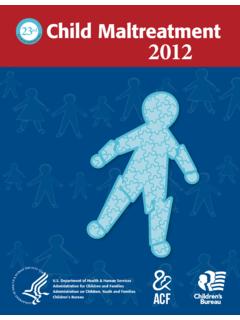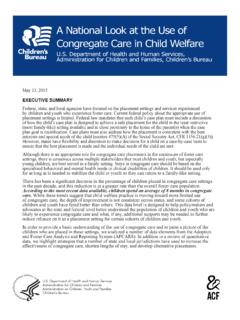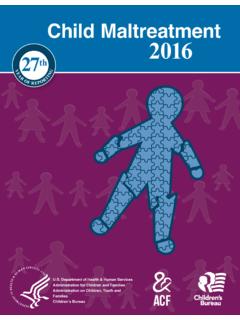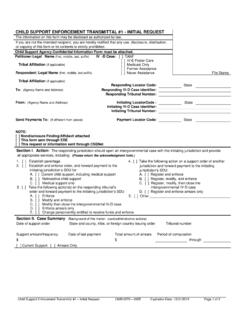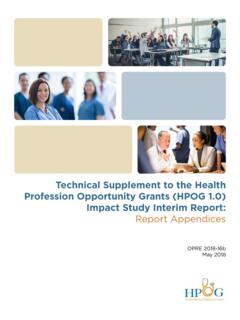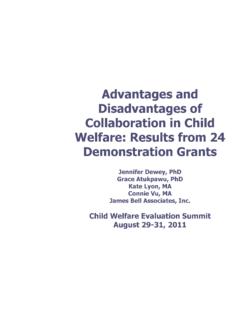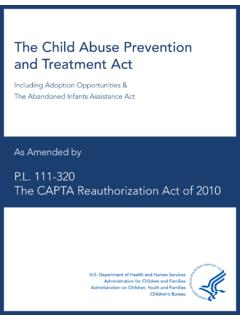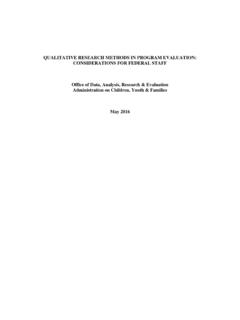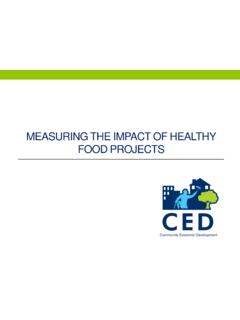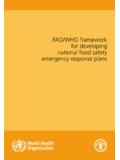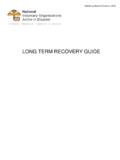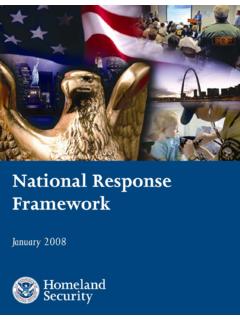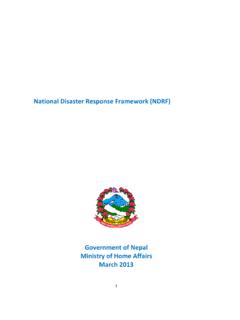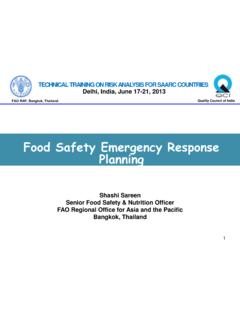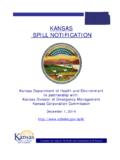Transcription of Child Maltreatment 2014 - Home | Administration …
1 Child Maltreatment 2 department of Health & Human Services Administration for children and families Administration on children , Youth and families children s Bureau This report was prepared by the children s Bureau ( Administration on children , Youth and families , Administration for children and families ) of the department of Health and Human Services. Assistance was provided by WRMA, Inc., a TriMetrix Company (WRMA) (Contract Order HHS233201500042I). Public Domain Notice Material contained in this publication is in the public domain and may be reproduced, fully or partially, without permission of the federal government.
2 Electronic Access This report is available on the children s Bureau website at Questions and More Information If you have questions or require additional information about this report, please contact the Child Welfare Information Gateway at or 1 800 394 3366. If you have questions about a specific state s data or policies, contact information is provided for each state in Appendix D, State Commentary. Data Sets Restricted use files of the NCANDS data are archived at the National Data Archive on Child Abuse and Neglect (NDACAN) at Cornell University. Researchers who are interested in these data for statistical analyses may contact NDACAN by phone at 607 255 7799, by email at or on the Internet at NDACAN serves as the repository for the NCANDS data sets, but is not the author of the Child Maltreatment report.
3 Recommended Citation department of Health & Human Services, Administration for children and families , Administration on children , Youth and families , children s Bureau. (2016). Child Maltreatment 2014. Available from Federal Contact Kurt Heisler, , , Office of Data, Analysis, Research, and Evaluation Administration on children , Youth and families department of Health & Human Services 330 C St SW Washington, 20201 Child Maltreatment 2 014 Child Maltreatment 2014 department OF HEALTH & HUMAN SERVICES Administration FOR children AND families Administration on children , Youth and families 330 C Street, SW, Washington.
4 20201 Letter from the Acting Assistant Secretary and Commissioner: Child Maltreatment 2014 is the 25th edition of the annual Child Maltreatment report series. This report relies on data states provide through the National Child Abuse and Neglect Data System (NCANDS). NCANDS was established in 1988 as a voluntary national data collection and analysis program to make available state Child abuse and neglect information. Data have been collected every year since 1991 and NCANDS now annually collects Maltreatment data from Child protective services agencies in the 50 states, the District of Columbia, and the Commonwealth of Puerto Rico.
5 Key findings in this report include: The national estimates of children who received an investigation or alternative responseincreased percent from 2010 (3,023,000) to 2014 (3,248,000). The number and rate of victims of Maltreatment have fluctuated during the past 5 the national estimate of victims from 2010 (698,000) to 2014 (702,000) show anincrease of less than 1 percent. Three-quarters ( ) of victims were neglected, percent were physically abused, percent were sexually abused. For 2014, a nationally estimated 1,580 children died of abuse and neglect at a rate of per100,000 children in the national began as a small, working paper in 1992, the Child Maltreatment series has grown into an important resource relied upon by thousands of researchers, practitioners, and advocates throughout the world.
6 The report is available from our website at programs/cb/research-data-technology/sta tistics-research/ Child - Maltreatment . NCANDS would not be possible without the time, effort, and dedication of Child welfare and information technology staff working together on behalf of children and families . We gratefully acknowledge the efforts of all involved to make resources like this report possible, and will continue to do everything we can to promote the safety and well-being of our nation s children . Sincerely, /s/ Mark Greenberg Acting Assistant Secretary Administration for children and families ii /s/ Rafael J.
7 L pez Commissioner Administration on children , Youth, and families Acknowledgements The Administration on children , Youth and families (ACYF) strives to ensure the well-being of our Nation s children through many programs and activities. One such activity is the National Child Abuse and Neglect Data System (NCANDS) of the children s Bureau. National and state statistics about Child Maltreatment are derived from the data collected by Child protective services agencies and reported to NCANDS. The data are analyzed, dissemi-nated, and released in an annual report.
8 Child Maltreatment 2014 marks the 25th edition of this report. The Administration hopes that the report continues to serve as a valuable resource for policymakers, Child welfare practitioners, researchers, and other concerned citizens. The 2014 national statistics were based upon receiving data from the 50 states, the District of Columbia and the Commonwealth of Puerto Rico (commonly referred to as the 52 states). Case-level data were received from all 52 states. ACYF wishes to thank the many people who made this publication possible. The children s Bureau has been fortunate to collaborate with informed and committed state personnel who work hard to provide comprehensive data, which reflect the work of their agencies.
9 ACYF gratefully acknowledges the priorities that were set by state and local agencies to submit these data to the children s Bureau, and thanks the caseworkers and supervisors who contribute to and use their state s information system. The time and effort dedicated by these and other individuals are the foundation of this successful federal-state partnership. Child Maltreatment 2014 Acknowledgements iii Child Maltreatment 2014 Contents Contents Letter from the Acting Assistant Secretary and Commissioner ii Acknowledgements iii Summary viii Chapter 1.
10 Introduction 1 25 Years of States Reporting CPS Data to NCANDS 1 Background of NCANDS 2 Future Reporting to NCANDS 2 Annual Data Collection Process 3 NCANDS as a Resource 3 Structure of the Report 5 Chapter 2: Reports 7 Screening 7 Investigations and Alternative Responses 8 Report Sources 9 CPS Response Time 9 CPS Workforce and Caseload 10 Exhibit and Table Notes 10 Chapter 3: children 17 Alternative Response 18 Unique and Duplicate Counts 19 Special Focus on children With Known Ages: Age Groups 19 children Who Received an Investigation or Alternative Response 19 Special Focus on children With Known Ages: children Who Received an Investigation or Alternative Response By Age Group 20 children Who Received an Investigation or Alternative Response by Disposition 20 Number of Child Victims 21 Child Victim Demographics 22 Special Focus on children With Known Ages: Child Victims by Age Group 23 Special Focus on children With Known Ages.
